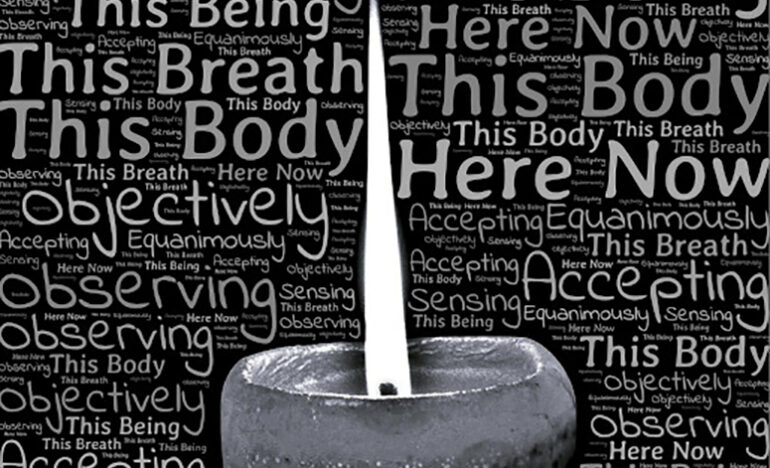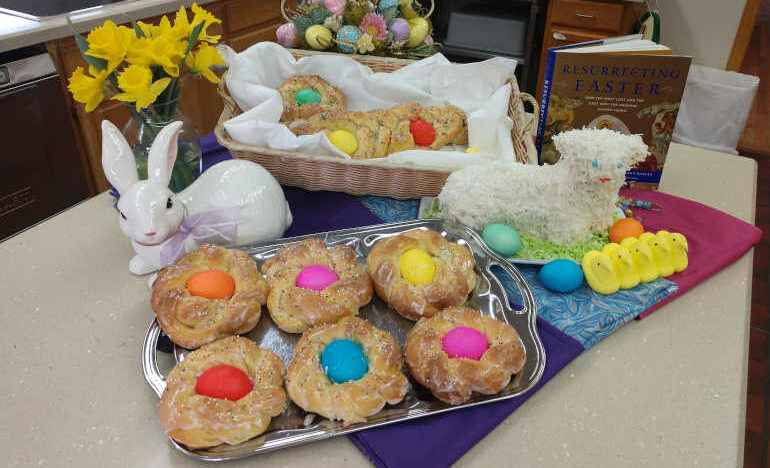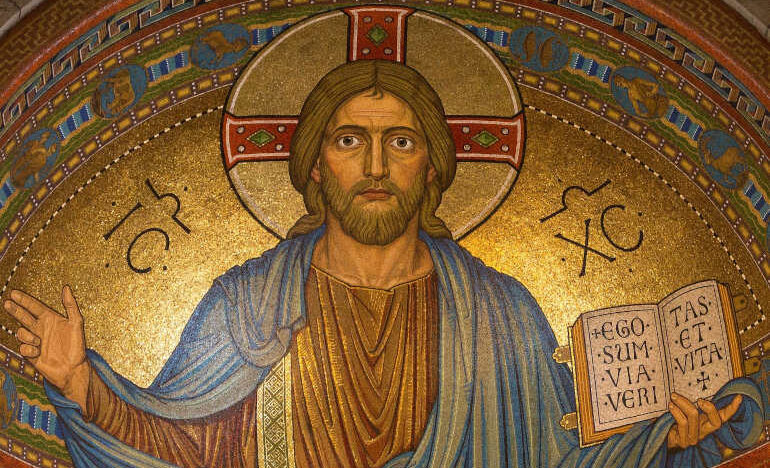Contemplation: The Use of Breath and Image in Centering Prayer

This is Part 2 of a 4 Part series. Read all the articles here.
In our introduction to centering prayer, we discussed using the sacred word as a method of expressing our intent to be open to the indwelling presence and action of God in the deepest center of our being. We now turn our attention to other sacred symbols as an alternative to the sacred word: the sacred breath and the sacred image.
All three — word, breath and image — are used to express our intent to surrender ourselves to the divine who lives within us and is forever luring us to intimacy. As we bask in the silence and stillness, we gently return to the sacred word, breath, or image when we find that we have become attached to a distraction.
All three — word, breath and image — are used to express our intent to surrender ourselves to the divine who lives within us and is forever luring us to intimacy.
It is interesting to note that in Hebrew, the one word ruah means both “spirit” and “breath.” The Gospel of John shares that when Jesus met with the apostles after the resurrection he gave them the gift of the Holy Spirit. He breathed on them and said: “Receive the Holy Spirit.” Breath has long been a descriptive symbol of this third person of the Trinity.
When God created humanity, he breathed the breath of life into the nostrils. The Holy Spirit continues to breathe in us. As stated in 1 Corinthians 3:16, “Don’t you know that you yourselves are God’s temple and that God’s Spirit dwells in you.” David Frenette explains in his book, The Path of Centering Prayer: Deepening Your Experience of God: “The Holy Spirit is the breath of God, the breath within our breath. The Spirit animates our life as our breath breathes in us, from the moment of birth until the instant of death.”
When we begin a session of centering prayer, we turn our attention for just a moment to our breathing as a means to consent to be open to intimacy with the Holy One. We refrain from returning to an awareness of our breathing until we recognize that we are attached to a thought, a feeling, a sensation, an image, or a reflection. We then ever so gently return to an awareness of our breathing for just a moment.
An alternative to the sacred word or breath is the sacred image. In centering prayer, we do not reflect on the image like we might in other forms of contemplative prayer such as Visio Divina, sacred seeing. In centering prayer, we utilize the sacred image in the same way as we employ the sacred word or breath. We begin our session glancing at the sacred image as a way to consent to being open to God’s life and activity within us. We simply glimpse at the image again when we recognize that a distraction has captured our attention. Imagining the image with our eyes closed is also an option.
It is recommended that the image not be detailed but a general visual symbol. It does not necessarily need to be a religious symbol because its purpose is to merely redirect your attention back to resting in God. It’s not meant to arouse spiritual emotion or reflection. It’s meant as a way to re-consent to being open to receive the presence and activity of the indwelling Holy One.
We bring to centering prayer a faith that assures us that God is at work deep within our being.
You may find it enriching to experiment with using the various sacred symbols — the word, the breath or the image — to find for you which best suits the purpose of self emptying. Experienced practitioner may want to try a different symbol than usual to see if it deepens an encounter with the divine.
We bring to centering prayer a faith that assures us that God is at work deep within our being. God is responding to our intention to consent to the divine presence and action within us. We place ourselves in God’s hands – in the hands of the One who knows us better than we know ourselves. We trust that the Sacred One is acting in furtherance of our transformation, our growth and our healing.
Over time you will notice that your distractions are fewer and the need for a sacred symbol diminishes. As we let go of the sacred symbol, we open ourselves to pure contemplation which is the topic of our next article.
Note: New articles in this series will be posted to the website every Monday and Wednesday. The full series can be found here: An Invitation to Something New: The Contemplative Life. On Thursday’s we’ll send an email to remind you of the articles
[Kathy Keary, a Precious Blood Companion and spiritual director, holds a master’s degree in theological studies and is a graduate of the Atchison Benedictine’s Sophia Center’s Souljourners Program, an intense study of spirituality and spiritual direction. Kathy believes that the divine is present and active in all of life and encourages others to be awakened to the God in all including the divine within. She enjoys accompanying others on their journey to wholeness discovering the person they were created to be.]
The image above is by John Hain from Pixabay.
Related

Easter Bread (Pane di Pasqua)
By Lucia Ferrara
Easter bread is a fun bread. It’s a fun bread to make with your children, with your family, with neighbors and friends. The tradition of Easter bread dates back centuries and comes from many parts of the world.

Easter Sunday, the Resurrection of the Lord
Today’s scriptures tell us how three days changed the world. How have they changed you?
Categories
Assembling God's Puzzle Coffee with Padre Cooking & Spirituality Encounters of the 4th Kind Family Matters Reflections on the Eucharsitic Prayers Spiritual Resources Taize Prayers The Contemplative Life Traveling with Pilgrims of Hope Uncategorized Videos Week of Prayer for Uhristian Unity When you need a little help
